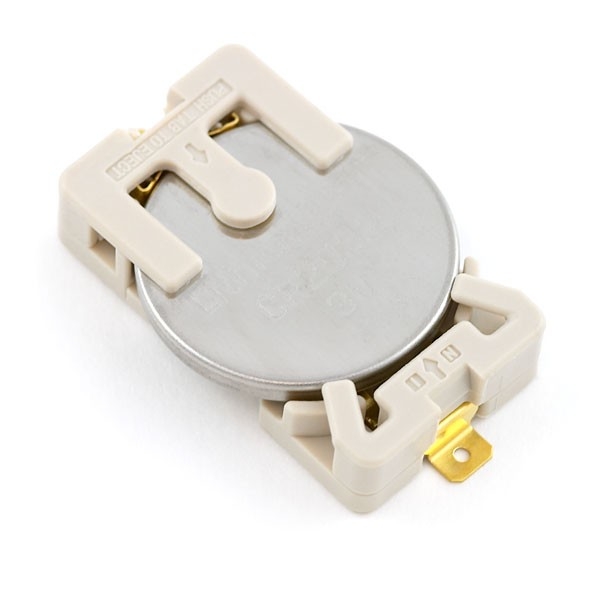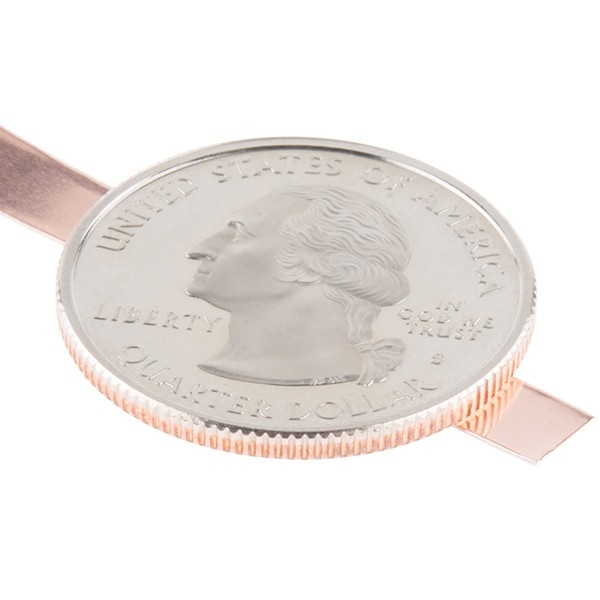Firstly, what are Coin Cell Batteries?
A coin cell battery is a flat, cylindrical battery used in a bunch of small electronics applications. You might have seen them in a wristwatch, remote control or any piece of wearable tech. Typically coin cells are perfect for uses that require small current draw over long periods of time, <10mA usually, but check the datasheets for more specific information on your particular battery. As for the different types of coin cell batteries, it can be a bit confusing at first glance but essential they are named in accordance with their chemistry and size.
Take the CR2032 for example, this is the coin cell battery you may have noticed on the motherboard of your laptop/PC. They contain a Lithium Manganese Dioxide chemistry, which isn't a critical thing to know about your battery, although interestingly that chemistry (and so, the CR prefix) always provides a voltage of 3V. The numerical part of the battery's name comes from the width and height measurements of the battery. The first two digits reflect how wide the battery is in millimetres whereas the last 2 digits use the height of the battery in 10ths of millimetres. That's a pretty quick and easy breakdown of the naming conventions behind CR coin cell batteries, you'll see different prefixes have different numerical conventions.
The polarity and name of the coin cell battery are also stamped on one of the faces of the battery too, so it's quite clear how it goes into your circuit/battery holder.
Why use a coin cell battery?
There's no one single reason you would opt for using a coin-cell battery in a project, however there are a few things to consider that will make it crystal clear if a coin cell is good for your project. First up, and undoubtedly the most important, is the recommended current drain (both continuous and pulse current) of the battery (see datasheet) and of your project (plan for the highest current draw), most of the time you will be providing a supply voltage to an IC using a coin cell battery so it's important to pick an IC with a low enough supply voltage for your battery type. Secondly, space/weight limitations would be a great reason to opt for a coin cell battery, electronics like wearables and watches use coin cells due to their lightweight, small size.
A primer on Internal Resistance of batteries
We like to think of batteries and power supplies in projects as capable of delivering a perfect number of volts, no matter what load we apply to them. This kind of perfect voltage source is called an ideal voltage source and it doesn't exist in the real world. There are some power supplies that come pretty close to it, however, most have some internal resistance that causes a drop in the source voltage when there is a current drawn. Essentially think of a battery as an ideal voltage source connected to a resistor in series. As you draw current (I) from a battery, the voltage drop (V) across the circuit will change according to the internal resistance of the battery. For a lot of batteries, this internal resistance is pretty low but still results in a small voltage drop relative to current drawn. This drop is pretty simply shown with Ohms Law substitutions as:
Voltage Drop from Internal Resistance = [ Ideal Voltage of Cell (V) ] x [ Internal Resistance of Battery (Ω) ] x [ Current drawn from circuit (A) ]
NB: The internal resistance of the battery will actually change over time, according to the temperature and voltage level of the battery.
Coin cell batteries are no exception to any of this and have some internal resistance that affects how we use them. The CR2032 is easily the most popular coin cell in use, and interestingly it's internal resistance (15-20Ω) is quite a bit higher than that of a regular AA alkaline cell (0.1-0.9Ω).
How do you connect a coin cell battery up to a project?
When it comes to hooking your coin cell battery up to your next portable/wearable project there are a couple of different ways you can do it.
First up there are the PTH battery holders than can be soldered directly onto a PCB (there is also a surface mount option available). These are great for providing backup power to an RTC or SRAM. Not to mention, there are different sizes available for each of the different battery types, with the 20mm version being the most widely used and sought after by far.
All you need to do is solder the 0.1" posts into standard PCB holes and you'll have a power connection. If you need dimensions for this battery holder/posts, you can find them on the datasheet.
Another way would be to connect your batteries to your circuit using a battery holder terminated with a JST connector or similar. Adafruit have made the perfect little battery holder that comes pre-terminated with a 2.00mm JST PH connector and an ON/OFF switch. The only downside is that it can only hold two CR2032 batteries, meaning you would be providing 6V rather than 3V. To use this you would just need the corresponding JST-PH connector on your circuit and simply plug-n-play.
Yet another way, slightly a little more crafty than the previous two, would be to use this Sewable battery holder from Sparkfun. Alongside some conductive thread, this battery holder would be the perfect addition to an e-textile project.
Finally, and the most simple of all is a copper tape paper circuit. Essentially you just need to make contact with the positive and negative faces of the battery with some copper tape to be able to provide power to your paper circuit and then clip or tape it in place!
That pretty much sums up all of the good bits and pieces when it comes to coin cell batteries! If you've got any more questions about batteries, start the conversation below.








